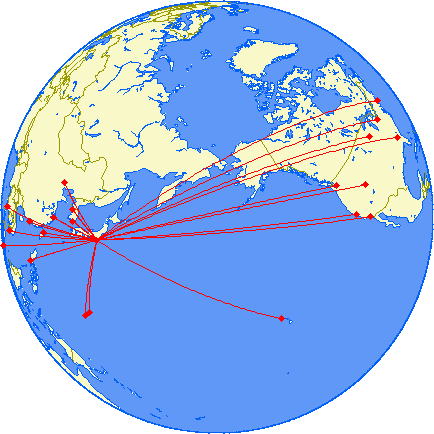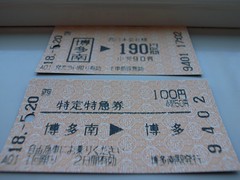Last week I began this series with a post detailing my experience, and what I know about the system of renting a place to live in the US, mainly focusing on details that are of particular note for a comparison with Japan. I then followed up with an interlude on anecdotes of racial discrimination in the American housing market, as discrimination in apartment rental is widely discussed in Japan. I had intended to continue sooner, but we’ve had so much active discussion on the blog over the past week that I decided to hold off for a bit longer. In this post, I will describe what I know about the process of renting a residence in Japan, explaining the peculiarities of the fee structure and the search process, but not getting much into the actual laws or regulations. I decided to keep these separate as I believe it is important to first discuss the reality of the system before trying to analyze how it compares with the letter of the law. In the next post I will describe my own experiences in searching for and renting here in Kyoto, as well as providing the details of my current contract as a case study.
In Japan, the vast majority of rentals go through real estate agents, and direct rentals from a landlord are quite rare without a personal connection of some kind. A typical rental process goes as follows:
You go to a real estate agent, tell them what you’re looking for, they show you information on some potential rentals, you pick ones you want to see. This process may begin online, and there are plenty of websites for browsing real estate, but once you indicate your interest and head over to the office, things are pretty much the same.
The agent will first call the party responsible for the property, be it the actual landlord, management company, or another real estate firm to check availability, verify conditions, and arrange a viewing time. As rental units are often cross-listed with multiple agencies, they need to coordinate schedules to make sure prospective renters don’t run into one another, and that the key is available. Once one or more viewings have been arranged, the agent will then drive you around in the company car to view the properties. They will show you as many as you like without complaint, and without expecting any charge, as these services are all provided for by the introduction fee paid upon completion of a rental lease.
Once you pick one you like, they sit you down, read and explain the contract clause by clause (apparently a legal requirement) and then you sign/stamp it, pay them, they hand over the key and documents related to required disaster insurance or activation of utilities, and get to move in. After moving in, you never have any dealings with the real estate agent again, but instead usually deal with a management company (管理会社), who actually accepts rent on behalf of the owner, and fields any questions you have regarding repairs etc.
When moving in, one usually has to pay first months rent, key-money, security deposit, real estate agent fee, and an insurance fee. The monthly bill may include a ‘common maintenance fee’ (共益費) to cover costs relating to the common areas of the building, usually a few thousand yen a month (compared with a typical rent of tens of thousands yen). In the US, condo or coop residents pay a similar maintenance fee, but for rental units it is subsumed into the general rental fee. As far as I can tell, there is no logical reason for this separate fee, except to make the advertised rent look smaller than it really is.
The term ‘key money’ is the standard translation of the Japanese term reikin (礼金), which literally means something like money given in thanks, or as an obligation. According to Wikipedia, reikin actually started as a gift given to the landlord by the family of a young student or single worker who moved from the country to the city, in exchange for the landlord watching after the naive new arrival. This gradually became institutionalized, and over the decades shifted from being a payment intended to cement a two-way social obligation (as the word implies) to a simple up-front fee paid to the owner when renting a place to live. Today, reikin equal to 1, 2 or even 3+ months rent is ubiquitous, although apparently common in some regions than others. Unlike a security deposit, reikin is never returned, regardless of how long one stays in the place, and the amount is also unrelated to how long one intends to stay. The legal status of has always been ambiguous, generally assumed to be technically illegal, but with no clear guidelines or alternative to paying it.
Key money does exist in the US, but is both explicitly illegal and quite rare. The only place I am aware of it being common is Manhattan, where building superintendents are known for requiring a cash bribe in exchange for leasing a desirable apartment, particularly those with rent-controlled below market-rate rent, although it probably exists in other markets as well. The two big differences are that reikin in Japan is both clearly advertised, and grudgingly tolerated, while key money in Manhattan is always an under the table cash, due to its status as a clearly illegal bribe, and that in Japan reikin always goes to the landlord, while in Manhattan it often goes to the super instead. In recent years, there has been an increasing trend to offer reikin-free apartments in exchange for a slightly higher monthly rent, which is obviously superior for anyone who isn’t completely sure they will be staying in the same place for many years, or who lacks enough savings to easily spare the hundreds or thousands of dollars (equivalent) that one has to piss away on reikin.
Security deposits (shikikin – 敷金) are also standard in Japan, and usually equal one or two months rents, as in other countries. Supposedly, landlords in Japan are far more likely to con you out of your security deposit than in most other countries, but I am told that if you press hard enough you can usually get most of it back. A good contract will specify that certain accouterments, such as the tatami mats, wallpaper, fusuma (wooden/paper screens) are “disposable” items, damage to which shall not be charged from the deposit.
Sometimes, the reikin and security deposit are combined into a somewhat bizarre ‘guaranty money’ (hoshoukin – 保証金), in which one pays a certain large amount, from which a certain smaller amount may be returned at the conclusion of the lease. This is functionally identical in every way to having a separate reikin and deposit, except that by using a different fee structure the real estate agent can disingenuously advertise the unit as ‘no reikin!!!’ while in reality being just as bad. Hoshoukin is usually 2-4 months rent, or equal to the amount that reikin and security deposit would be combined.
As I mentioned earlier, there is also a fee paid to the real estate agent, usually equal to one month rent, but sometimes companies will offer a fee equal to 1/2 month rent. Disaster insurance is also mandatory, at least when renting a house (I don’t recall for apartments), but is not particularly expensive, perhaps in the range of ¥10,000-20,000 per year.
The last fee that needs mentioning is the ‘renewal fee’ (更新料). Most apartment leases in Japan are for one or two years, after which one generally has to pay a renewal fee, usually equal to one month rent per year of lease. In Japan, one can generally cancel a lease with no penalty by giving only one month notice, which is actually one of the reasons that landlords had been hiking up the reikin for so many years-to compensate for the possible loss of income due to a very short-notice vacancy. (And also just because they can get away with it.) The renewal fee is essentially interim reikin, discouraging tenants from making an unscheduled move in the middle of their lease, and helping to prevent loss of long-term rental income to the landlord.
While not a fee exactly, I can’t end this post without discussing the guarantor system. When renting a place in North America, ones credit worthiness is based on the credit score, which is ultimately derived from one’s entire financial history. The landlord checks the customer’s credit score, perhaps also looking a recent tax statement for proof of current earnings, and then allows them to rent if they seem sufficiently trustworthy. Generally, a co-signer or personal guarantor is only needed in cases where the renter hs no credit history or income, such as the case of the college student I mentioned in the first post. In Japan, there is no personal credit score, with personal guarantors required for and and all rentals. The guarantor (hoshounin – 保証人) the guarantor co-signs the lease with the renter, and is therefore legally on the hook should the renter skip out on rent, or refuse to pay for damages in excess of the security deposit. The guarantor’s creditworthiness is generally based on proof of income, and can be anyone that makes enough money. Foreigners can actually serve as guarantors, although permanent residency may be required. For renters who don’t have a relative, boss, teacher, or well-off close friend to serve as a guarantor there are also companies that provide guarantor services-essentially rent insurance-for around ¥50,000.
So, there you have a general overview of some of the unique properties of Japanese rental arrangements. I’ll move on to my personal experience in the next part, but I’m sure everyone will bring some corrections/additions/information on local variance to the comment thread below.

 This is the ex-Narita route map of Delta Air Lines following its acquisition of Northwest. Delta is the #3 carrier at Narita with about 330 flights/week, compared to JAL’s 870 and ANA’s 500.
This is the ex-Narita route map of Delta Air Lines following its acquisition of Northwest. Delta is the #3 carrier at Narita with about 330 flights/week, compared to JAL’s 870 and ANA’s 500.


